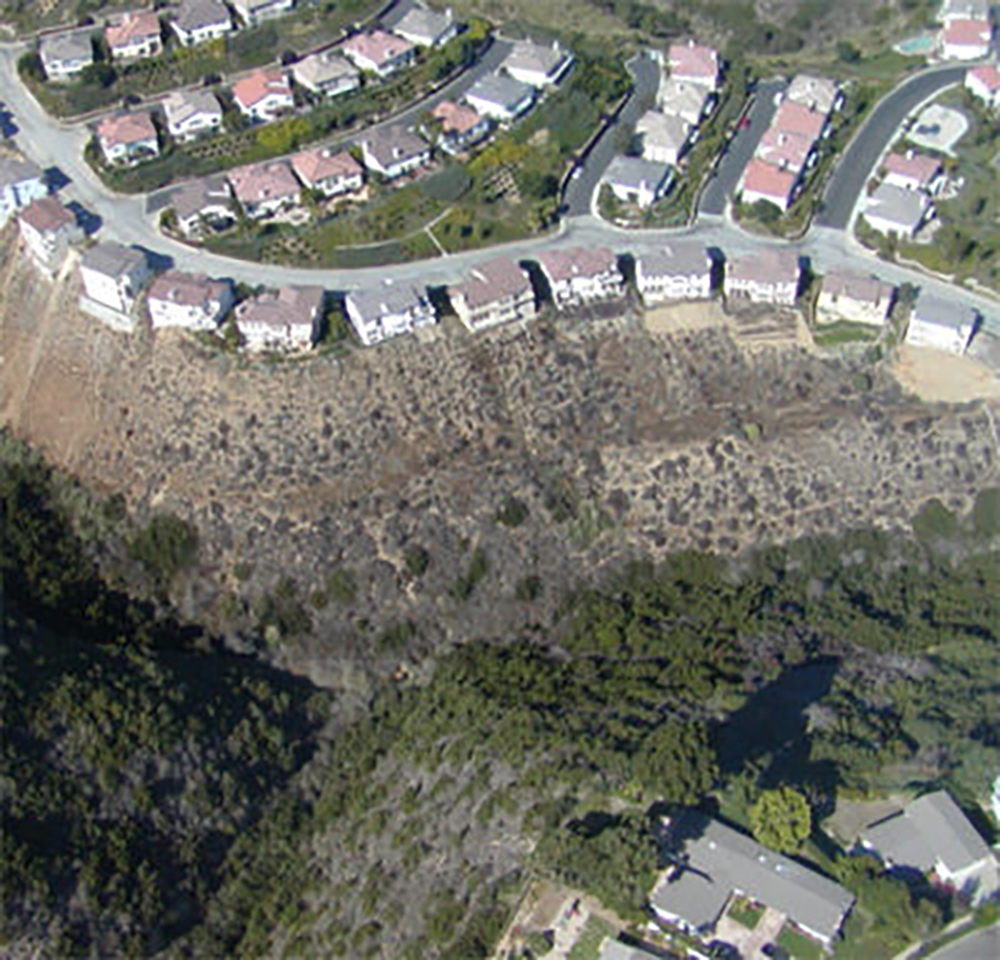The Project.
At Ridgegate, a 100-lot subdivision in La Jolla, developers planned their site layout before knowledge of an underlying land-slide. In response to this situation, Leighton designed the first and tallest mechanically stabilized “natural” canyon wall. The work was done in 1987, and the geogrid-reinforced slope is still one of the highest in the world.
Location:
La Jolla, CA
Services:
- Geotechnical
- Geotechnical Testing
Project Fact:
Three decades later, this geogrid-reinforced slope is still one of the highest in the world.
The Leighton Solution.
Leighton designed a 1500-foot long buttress. Constraints required that the final slope be constructed at a slope of 1:1 to a maximum height of 115 feet. The strength parameters of the prevailing soils were insufficient for attaining an adequate safety factor for the internal stability of the buttress. A cost-benefit analysis of cement treatment, lime treatment, and the use of a Tensar geogrid resulted in selection of the latter for reinforcement of the buttress. Approximately 180,000-cubic-yards of soil were excavated and recompacted to at least 90 percent of the maximum dry density.
Approximately 150,000-square-yards of Tensar SR-3 polymer geogrid and 40,000 square yards of Tensar SS-1 geogrid were incorporated in this buttress at various designed spacings. A 3/4:1 (horizontal to vertical) backcut was constructed for this buttress. Furthermore, an instrumentation program was used in order to study the performance of this geogrid-reinforced buttress for the restricted limits of excavation. This instrumentation program consisted of strain gauges on both sides of the SR-3 geogrid at three different elevations within the buttress and installation of two slope indicators one vertically and one horizontally. Magnetic rings were also installed along the slope indicator so that a probe could be used to obtain data indicating the deflection of soils relative to surrounding geogrids. The results of this instrumentation program were in general agreement with Leighton’s design assumptions.



